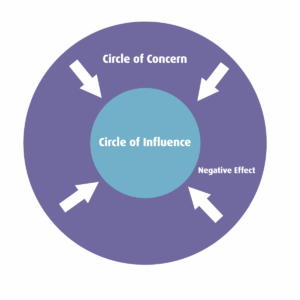‘After the First World War war ended, Britain kept up a blockade that left children in cities like Berlin and Vienna starving. Malnutrition was common and rickets were rife. An eye witness reported that “in the hospitals there was nothing but paper bandages.”
Sisters Eglantyne Jebb and Dorothy Buxton, were part of the Fight the Famine movement, spreading information about what was happening in Europe.
In 1919, Jebb was arrested for distributing leaflets in Trafalgar Square. They bore shocking images of children affected by famine in Europe, and the headline: ‘Our Blockade has caused this – millions of children are starving to death’.
Jebb was tried for her protest and found guilty. But the prosecuting counsel was so impressed with her that he offered to pay the £5 fine himself.
Soon, the sisters decided that campaigning alone would not be enough – direct action was needed. In May 1919, the Save the Children Fund was set up at a packed public meeting in London’s Royal Albert Hall’ –
This was the start of Save the Children, an International non-for-profit organisation established in the United Kingdom in 1919. Eglantyne Jebb and her sister were up to a rocky start. Nonetheless they were ‘spirited’, committed.
100 years later this organisation helps children in over 100 through initiatives that improve education, health care, and economic opportunity.
These two women, in an a utterly hostile environment, have been able to achieve the unthinkable without the help and leverage of technology as we know it today.
Changing an organisation cannot just be an intellectual pursuit.
I’ve noticed a pattern, across industries, whereby many want to transform their businesses by developing change capability in the way they run projects, I.e. change management methodologies, shortcuts, tactics, strategies. And it often does not work. Why?
I’ve come across countless conversations about how difficult, or impossible, it is to change the culture in a company. Some are hopeful, yet discouraged and frustrated, because ‘things’ are above and beyond one’s control. Some complain, others blame.
I believe that each of these statements are relative and, often, just dismissive.
How then?
The most powerful insight I can think of was taught by Stephen R. Covey, the author of ‘The 7 Habits of Highly Effective People’, when he talks about the concept of circle of influence versus the circle of concern, below.

The concept is quite simple. Regardless of the area you currently operate in, just ensure the focus of attention and effort your team deploys is 100 percent of the time on activities and initiatives that:
a) They have control over;
b) Add disproportionate value to that business area.
Do it consistently, over a sustained period of time, then watch what happens?
Inside-out
There is an increasing body of workshops, courses and classroom-led training that teach how to connect to purposeful causes, find meaning and manage change.
I think the answer is ‘inside-out’ and resides in leadership’s ability to commit to what Simon Sinek calls one’s ‘Infinite Game‘.
Ultimately leaders and managers have to make a conscious ‘spirited’ effort to go that extra mile.
To find out more follow Manuel or access additional resources and whitepapers.


